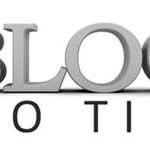It can be confusing trying to sort out all of the Web and Internet Jargon, so we have put together this great reference to help you sort out whats from what.
A – D , E – I , J – O , P – S , T – Z
- Anchor
A means of associating one object with another. If you click on hypertext on a web page that links you to another place. That hypertext is ‘anchored’ to the link. - Blog or Web Log
A blog (short for “web log”) is a type of web page that acts as a public diary or journal. They tend to be more informal than other web pages, and often updated with personal reflections on a topic. The accuracy of the content in blogs varies widely. - Browser Cache
A cache is a storage area on your computer of past content that you have viewed on your browser. When you view a web page, all the text and graphics get downloaded to your cache for viewing. If you should view the same page again later, then you don’t have to download the content again as it can be read directly from your ‘cache’. Often it is necessary to ‘refresh’ your cache, so it forces your browser to update the content from the website rather than reading it directly from your computer. - Cached Link
Just as your browser caches web pages, so do search engines. The last time that a search engine’s spider visits a web page, it stores a snapshot of it just like your browser does using your browser cache. The cached link may not always reflect the most up to date content for that web page. - Case Sensitive
When something is case sensitive, it means that Upper Case (Capital letters) and lower case letters are treated differently (ie. ‘A’ is not ‘a’). If something is not case sensitive, it means that all upper case letters are treated as lower case letters (so ‘A’ is the same as ‘a’). This is especially important with the use of passwords, as if the password was case sensitive then ‘PassWord’ would not be the same as ‘password’. - CGI
“Common Gateway Interface,” the most common method that internet programs interact dynamically with users. The function of taking information typed in on a web page and sending it off to another program in Java, Javascript, or Perl or another programming language, and then display result using HTML. - Content Management System (CMS)
Is a program or suite of programs to allow the easy update of web pages with little technical knowledge at all. No HTML coding is generally required. Web sites have to be set up to allow CMS updates. - Cookie
Information returned from a web server computer, and then stored by your browser on your computer. Cookies are used to store customized information about a website so that web pages are more personal to your interests. - Database
A collection of information stored in one central location, that has the ability externally to have information in it queried, inserted, updated, and deleted. Often, this is the source from which data is retrieved from to display products or information dynamically on a website. - Domain Name
These are human friendly ways of linking an easily to remember text name to a harder to remember numeric IP address. The Domain Name / IP address combinations are stored in huge directories on domain name servers. Using the IP address pointed to by a domain name you can then find a computer on the internet or network. - Download
To copy something from a central location such as a web server to a peripheral location such as your computers hard drive. Copying data from your computer to a central location (or server) is known as Uploading. - Extension (File Extension)
In Windows, DOS and some other operating systems, one or several letters at the end of a filename. Filename extensions usually follow a period (dot) and indicate the type of file. Eg. filename.txt denotes a plain text file, filename.htm or filename.html denotes an HTML file. Some common image extensions are filename.jpg or filename.jpeg or filename.bmp or filename.gif - Favorite
A term used with Microsoft’s Internet Explorer browser, and is a feature similar to Netscape’s Bookmarks. It is an easy way of storing a link back to a URL you would like to return to. - Flash
A technology from Macromedia (now Adobe Systems) that allows animation or moving graphics on a web page. In order to view flash content your browser requires a Plug-In. - Frames
A way that web pages can be divided into sections, each section is treated like a separate window and has its own scrolling. - FTP
File Transfer Protocol. A way to quickly transfer files across a network from one location to another. - Go-live
The point at which a website or application becomes published on the Internet and is available to the public. (See web design methodology). - Head or Header (of an HTML document)
Part of a webpage defined by HTML beginning with and ending with containing the Title, Description, Keywords fields. - Multi-Homing
A phrase used to describe when a host is connected to two or more networks simultaneously. - Host, Hosting
A Computer that delivers files and web pages to browsers or other computer clients. Websites are located on a host (computer) directly connected to the Internet. - HTML
Hypertext Markup Language. A standardized computer code to describe the formatting of information for display. It is imbedded in all “source” web documents, and contains the textual content, images, and links to other documents (and possibly audio & video). - HyperText
On the World Wide Web, the feature, built into HTML, that allows a text area, image, or other object to become a “link” to another document on the computer or network. - Internet
A huge network of computers that all use the TCP/IP protocol and that originated from the ARPANET project of the late 60’s and early 70’s. An “internet” (lower case i) is any computers connected to each other (a network), and are not part of the Internet unless they use TCP/IP protocols. - Intranet
An “intranet” is a private network inside a company or organization. An intranet may or may not connect to the Internet. - IP Address or IP Number
(Internet Protocol number or address). A unique number consisting of four parts separated by dots, e.g. 192.168.0.1 Every machine that is on the Internet has a unique IP address. - ISP or Internet Service Provider
A company that sells a service that allows you to connect to the Internet via DSL, cable, modem, or satellite. Most offer you an email address, and can also offer you the ability to create a personal web page. - Java
A programming language invented by Sun Microsystems that was designed to be platform independent (run on many different types of computers) and to provide greater functionality in web pages. Small Java programs are known as “Applets”. - Javascript
A simple programming language developed by Netscape to work with HTML and increase the interactivity in Web pages. - Keyword(s)
A word searched for in a search engine. Multiple keywords separated by spaces form a key phrase (or search phrase) when typed into a search engine. - Link
The URL imbedded in another document, so that if you click on the highlighted text or button referring to the link, you retrieve the outside URL. - Link”Rot”
Is a term describing the aging of links. When links are not kept up to date and are not constantly refreshed, they can become out of date. The objects that the links point to may not be at the same locations anymore resulting in ‘missing page’ or ‘link unavailable’ errors. - Merchant Account
A bank account that allows for the receipt of credit card funds. - Meta-Search Engine
A type of Search engine that submits your keyword search to other search engines, returning an aggrigate. As it is search engines are comprehensive, using a meta-search engine can result in a wide search being performed. - Mirroring (Raid)
A technique on hard drives of servers where the data is written to two hard drives simultaneously, in effect duplicating the data in two places. This way if one drive dies, the system can automatically use the other copy with no downtime or loss of service. Mirroring is know as Raid Level-1. - Navigation
The means by which a user can click from page to page on a website. - Newsgroup
A discussion group operated through the Internet. - Packet
A means of breaking a network communication down into smaller units so that they can be more efficiently routed from the source computer to the destination computer over the network. When they reach the destination computer, the packets are then reassembled to form the original transmission. - Payment Gateway
A means to allow the secure transfer of credit card funds from users on your website to your merchant account. - PDF (.pdf) file
Abbreviation for Portable Document Format, a file format developed by Adobe Systems, that is used to capture almost any kind of document with the formatting in the original. Viewing a PDF file requires Acrobat Reader. - Plug-In
An application built into a browser or added to a browser to enable it to interact with a special file type (such as a movie, sound file, Word document, etc.) - Raid (Redundant Array of Independent Devices)
A system of hard drives that is optimized to provide performance and dependability (fault tolerance) . Raid functions are described as levels. The most common are Level0-Level7, Level0+1, Level-S. Most Servers and Databases use RAID. - Search Engine Optimization
A set of practices that attempt to make a website more attractive to search engines, thereby encouraging higher rankings. - Section 508
Web Site enabled technologies to aid those with disabilities … - Script
A script is a type of programming language that can be used to retrieve and display information on web pages. Scripts can be used to communicate with databases, process Forms (boxes) and other web page interaction. - Server, Web Server
A computer on the Internet and having an IP address, that it can provide documents and files via the World Wide Web. They are also known as a ‘Host’. Many websites operating from one web server is called shared hosting. A single website on a single web server is called dedicated hosting. - Server-Side
Something that operates on the “server” computer (supplying the web page), in contrast to the “client” computer (receives and views the web page). Usually it is something that supplies dynamic content. - Site or Web Site
A collection of related web pages hosted on a web server. - Spider
Computer robot programs, referred to sometimes as “crawlers” or “Bots” that are used by search engines to search the World Wide Web. They are also used by spammers to harvest email addresses from web pages to add to spam lists. - SSI commands
SSI stands for “server-side include,” a type of HTML instruction telling a computer that serves Web pages to dynamically generate data, usually by inserting certain variable contents into a fixed template or boilerplate Web page. Used especially in database searches. - Striping (Raid)
A technique on hard drives of servers where the data is split into two (or more) parts and each part is simultaneously written to two hard drives. This way it takes less time to read and write the data. No redundancy is given. Striping is know as Raid Level-0. - TCP/IP Transmission Control Protocol/Internet Protocol)
This is the suite of protocols that defines the Internet. - Telnet
Internet service allowing one computer to remotely log onto another computer. - Usability
A set of properties that makes something easy to use. - URL
Uniform Resource Locator. Is an address to find a certain document on a certain computer on a network. Consists of five parts: File Type, domain Name, Folder(s), file name, File Extension.
Eg. https://www.ibm.com/usa/index.htm
File Type: ‘https://’ (could also be ‘FTP://’ or ‘TELNET://’)
Domain Name: ‘www.ibm.com’
Folder(s): ‘usa’ (Could be many folders)
File Name: ‘index’
File Extension: ‘.htm’ - UseNet
Is a network of tens of thousands bulletin board like forums known as “newsgroups.” - XHTML
A variant of HTML. It stands for Extensible Hypertext Markup Language which is a hybrid between HTML and XML that is more universally acceptable in web pages and search engines than XML. - XML
Extensible Markup Language. Very good for displaying pages retrieved from databases where parts of the page are standardized and must reappear many times. See XHTML.
CEO, Flying Cow Design
Attended University of Auckland
Lives in San Francisco Bay Area










